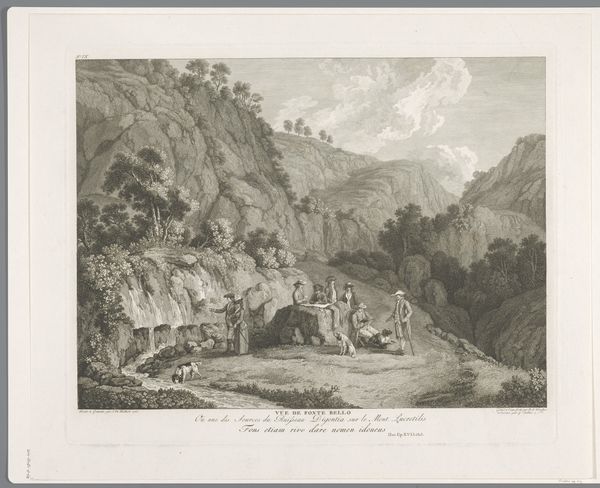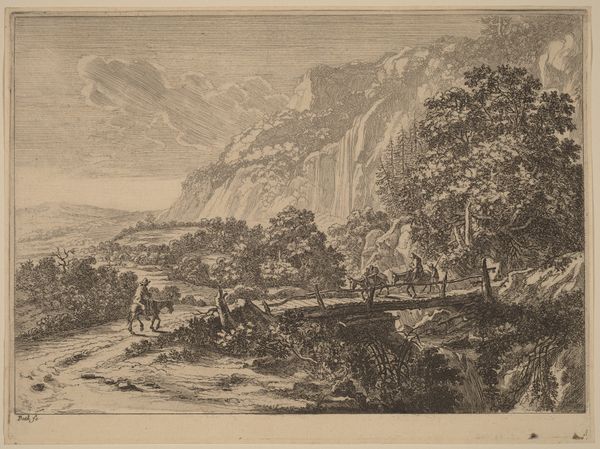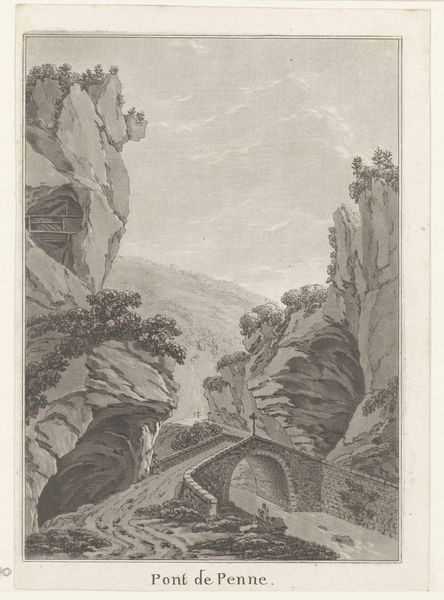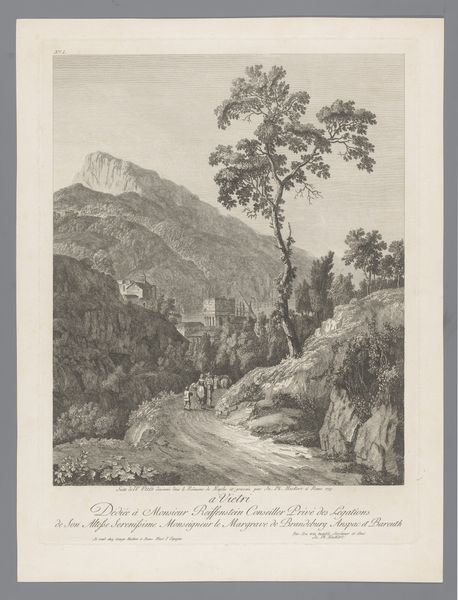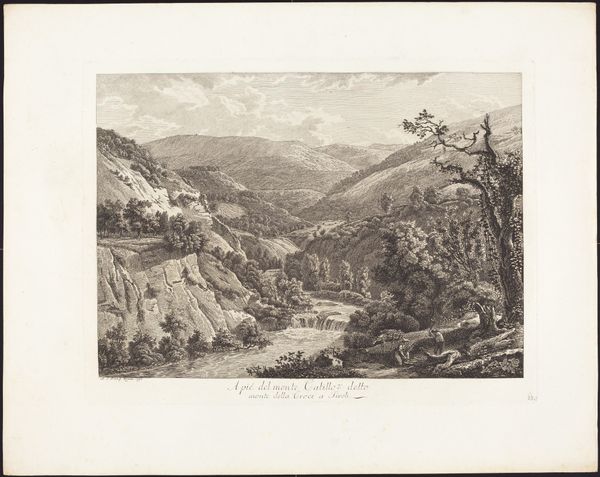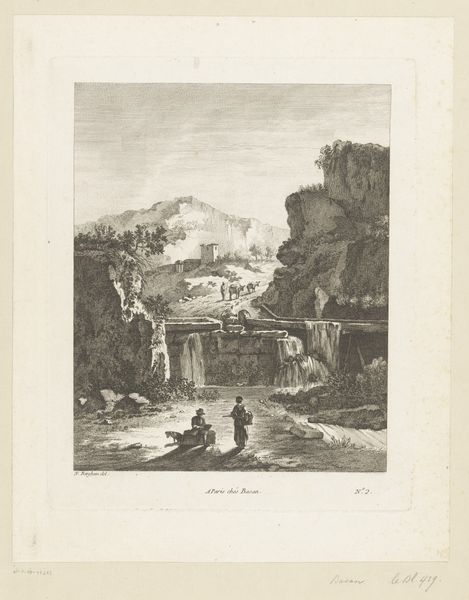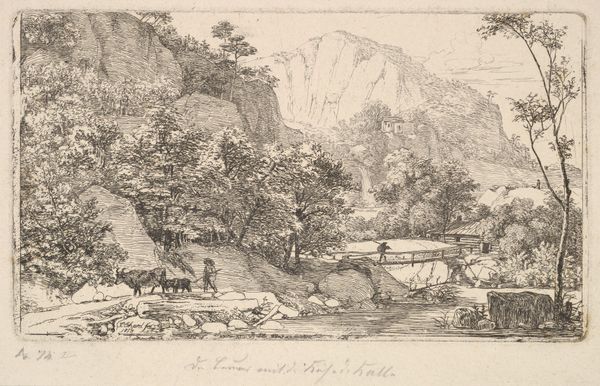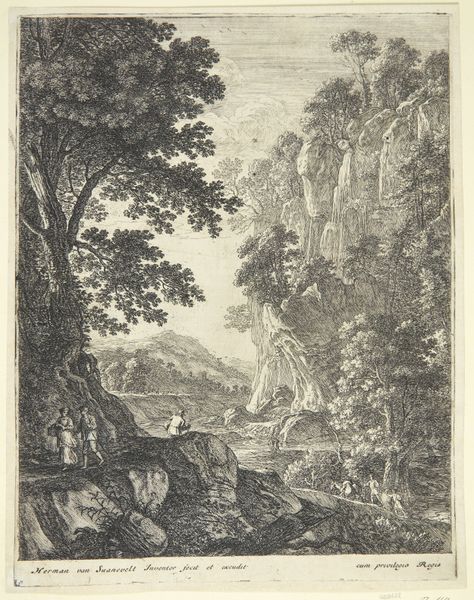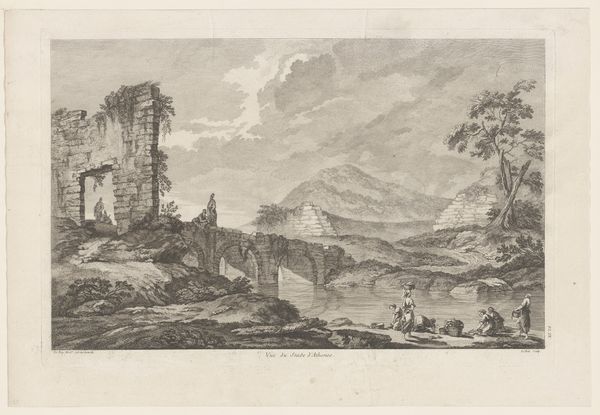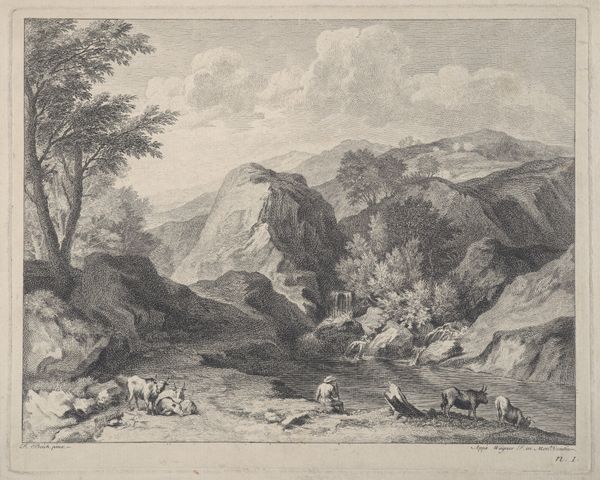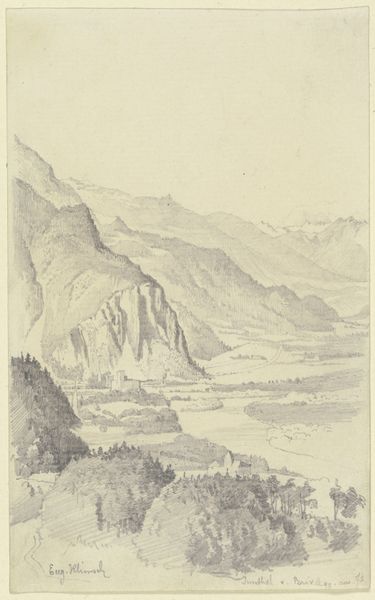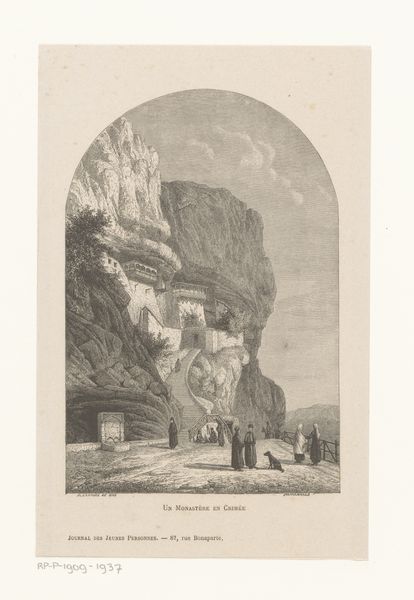
print, engraving
#
neoclacissism
# print
#
old engraving style
#
landscape
#
form
#
mountain
#
line
#
engraving
Dimensions: height 163 mm, width 117 mm
Copyright: Rijks Museum: Open Domain
Curator: This print, titled "Landschap in Zwitserland," or "Landscape in Switzerland," was created around 1810 and is an engraving rendered in a distinct neoclassical style. Editor: The overwhelming mood for me is one of serene constraint. It’s beautiful, yet there’s an undeniable feeling of being hemmed in by the imposing rock formations, both architecturally and symbolically. Curator: Absolutely. The composition is cleverly structured; observe how the artist utilizes a limited tonal range and detailed linear work to achieve spatial recession, directing our eye deep into the landscape. Note, too, how the verticality of the cliff face dominates the pictorial space, contrasted with the receding hills in the distance. The lines, precise and unwavering, describe not just the visible surfaces but imply the form beneath, which contributes significantly to the illusion of three-dimensionality in this two-dimensional work. Editor: And what lies beneath that form? This visual order certainly conveys the sublime, reflecting early 19th-century views of nature, yet I also see potential tension here. Switzerland, positioned amid larger empires at that moment in time. How do ideas of national identity manifest, or get repressed, amidst the lines of class and conquest represented? Look, for instance, at how this small hamlet seems dominated, almost engulfed by the monumental rocks. Who is really in power? Curator: An insightful interpretation, definitely. We cannot ignore the way form speaks across time. By limiting color, this artist focused the eye and mind on essential shape. Note that they could only be so detailed with tools available at that time: they create a tension that is less about social anxiety and more about showing viewers what their skill made available to human sight in representing landscape. Editor: Maybe. But that is itself about who the intended viewer was and about controlling what meanings a scene might hold. Whether conscious or not, visual art becomes a conduit for those broader struggles around how a national or individual space is perceived and occupied. This work resonates as a document of cultural experience, inflected, perhaps subtly, by ideas circulating at that particular historical juncture. Curator: Thank you for such layered and historically rich insight. I see now just how an engraving of landscape carries with it so many more dimensions of significance. Editor: Agreed, looking closely at formal choices expands both how we see and how we consider questions of equity and power today.
Comments
No comments
Be the first to comment and join the conversation on the ultimate creative platform.
